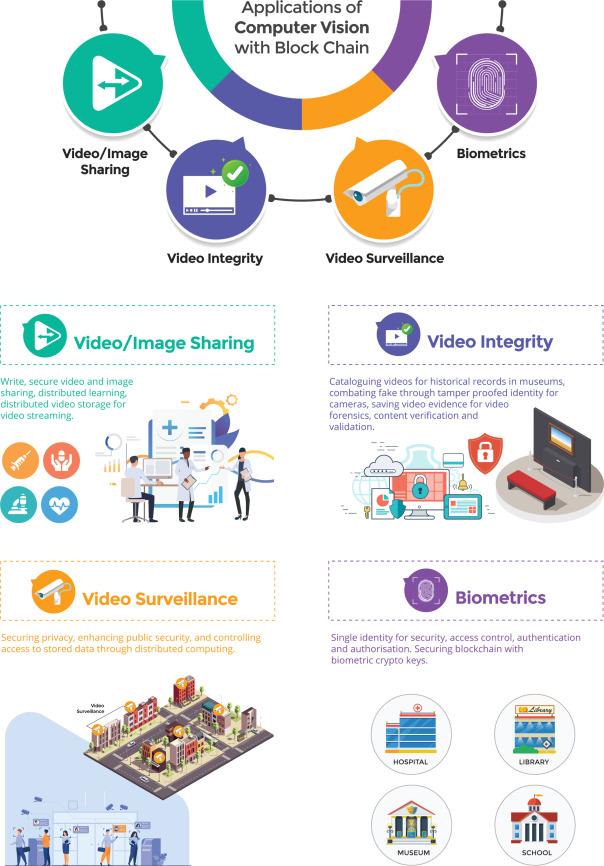How Implementing Blockchain in Educational Institutions is Revolutionizing Data Security and Learning
In today’s fast-evolving digital landscape, data security and innovative learning strategies stand at the forefront of educational priorities. Enter blockchain technology, a disruptive solution that is not only securing sensitive academic data but also transforming the way students and educators interact with learning platforms.In this article, we explore how implementing blockchain in educational institutions is revolutionizing data security and shaping next-generation learning experiences.
What is Blockchain and Why Does It Matter in Education?
Blockchain is a decentralized,distributed ledger technology that securely records digital transactions across multiple computers. Unlike conventional databases, blockchain ensures data integrity through transparency, immutability, and cryptographic validation.
In the context of education, blockchain paves the way for secure record keeping, transparent credentialing, and streamlined administrative processes, fundamentally altering conventional models of academic management.
Why Data Security is Critical for Educational Institutions
Schools, colleges, and universities handle an immense variety of sensitive data, from student records and transcripts to research and financial facts. Data breaches in education have been on the rise, leading to concerns including:
- Identity theft and personal data misappropriation
- Manipulation of academic records
- Loss or corruption of intellectual property
- Reduction of institutional trust and reputation
Blockchain technology addresses these vulnerabilities by introducing a layer of security and verification previously unattainable with standard systems.
Benefits of Blockchain in Educational Institutions
1. Enhanced Data Security and Privacy
- Immutability: Once stored on a blockchain, records cannot be altered or deleted, eliminating tampering and fraud.
- Decentralization: Data is stored across a peer-to-peer network, reducing single points of failure and making hacking substantially harder.
- Role-based Access Control: permissions can be finely tuned, ensuring that only authorized individuals can access sensitive information.
- end-to-End Encryption: Data is protected from unauthorized access at every step.
2. Seamless Academic Credential Verification
- Instant Verification: Diplomas, certificates, and transcripts can be validated in real-time, reducing administrative burden.
- Global Portability: Students and professionals can present their credentials easily anywhere in the world.
- Prevents Forgery: Credentials stored on the blockchain are virtually impossible to counterfeit.
3. Streamlined Administrative Processes
- Automated Smart Contracts: Admissions, grading, and fee transactions can be automated and securely processed.
- Audit Trails: Every transaction is transparently logged, facilitating audits and compliance.
4. Empowering Personalized Learning
- Microlcredentialing: Track achievements in modular units, supporting competency-based education.
- Ownership of Learning Data: Students can control their academic and learning portfolios, sharing selectively with employers and institutions.
How Blockchain is Changing the Learning Experience
Blockchain technology is not just about data security—it’s redefining the concept of learning itself. Here’s how:
- Decentralized Learning Platforms: Peer-to-peer resource sharing enables collaborative, borderless education.
- Gamified Credentials: Learners earn blockchain-backed badges and certificates as they progress, promoting engagement and lifelong learning.
- Transparent Curriculum Evolution: Course content updates and changes are traceable, ensuring continuous betterment and trust in curricula.
- Facilitating Research Collaboration: Intellectual property and research outputs can be timestamped and shared securely.
Real-World Case Studies: Blockchain in Action
1. MIT’s Digital Diplomas
The Massachusetts Institute of Technology (MIT) became a pioneer by offering digital diplomas recorded on the blockchain.Graduates receive a paperless, verifiable diploma they can share globally with employers, reducing hiring friction and diploma fraud.
2. University of Nicosia
The University of Nicosia in Cyprus became one of the first institutions to implement blockchain for storing and issuing academic certificates. Their example has inspired universities worldwide to adopt similar solutions.
3. Sony Global education
sony Global Education developed a blockchain-based educational platform allowing students to securely record and share their earned credits and grades across institutions—a meaningful step toward collaborative global education.
Practical tips for implementing Blockchain in Education
Ready to embark on your institution’s blockchain journey? Keep these best practices in mind:
- Start with Pilot projects: Test blockchain in a specific workflow, like diploma verification or record keeping, before system-wide rollout.
- Partner with Experienced Vendors: Collaborate with established blockchain solution providers versed in educational needs.
- Integrate with Existing Systems: Ensure compatibility with current authentication, learning management, and administrative softwares.
- Prioritize Data Privacy: work with legal and IT teams to comply with FERPA, GDPR, and local data laws.
- Educate Stakeholders: Provide training for staff and students to maximize trust and effective adoption.
Challenges and Considerations
Despite its immense potential, blockchain adoption in education faces a few hurdles:
- Technical Complexity: Implementing blockchain solutions requires specialized expertise and infrastructural investment.
- Scalability Issues: Large-scale data management on blockchain may still face bottlenecks.
- Interoperability: Ensuring compatibility across institutions and ed-tech platforms is crucial for meaningful adoption.
- Regulatory Uncertainty: Compliance with evolving educational and data privacy regulations must be a priority.
Addressing these challenges early can smooth the transition and accelerate the benefits of blockchain integration.
Conclusion: The Future of Blockchain in Education
The implementation of blockchain technology in educational institutions is ushering in a new era of data security, transparency, and interactive learning. By protecting sensitive information, simplifying administrative workflows, and empowering learners, blockchain is enabling schools and universities to address both present and future challenges head-on.
As more institutions embrace this transformative technology, students and educators alike will benefit from unprecedented trust, mobility, and innovation within the education sector. Now is the perfect time to explore how blockchain can revolutionize your institution, redefining education for a digital, global world.

